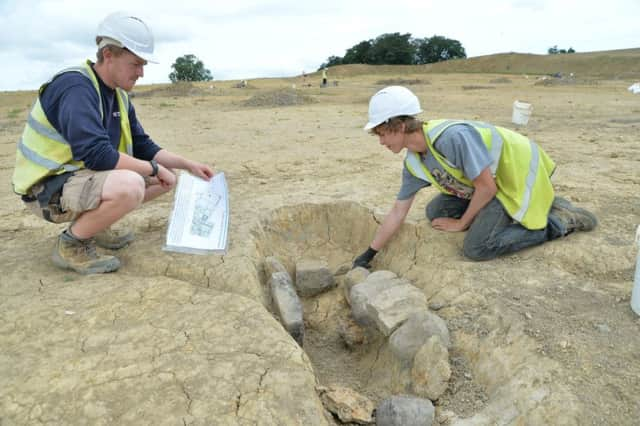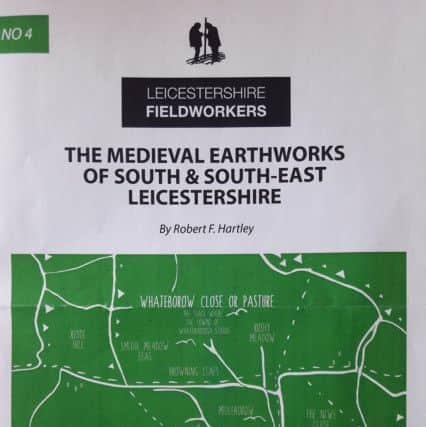Painstaking research leads to book cataloguing Harborough's archaeology sites


Former county archaeologist Robert Hartley began compiling the publication after his retirement in 2014 and it was officially released this week.
The book reviews all the medieval earthwork sites in Harborough District, comprising most of South and East Leicestershire.
Advertisement
Advertisement
A spokesman for Leicestershire Fieldworkers, which underwrote the cost of publication, said: “It includes many of Leicestershire’s deserted villages, made famous by the great landscape historian W H Hoskins, including Great Stretton, Ingarsby, Knaptoft, Lowesby, as well as moats, water mills, castles, monasteries and field systems.


“It is an essential tool for the County’s planners, enabling them to protect these sites, but also allows anyone exploring this countryside to gain a fuller understanding of the historic sites they can see in the fields.”
Mr Hartley said: “Searching for clues to history in such a lovely landscape has been enjoyable, and I have been helped by many friendly farmers and landowners, but it was not sometimes without problems. Young cattle love to chew the survey tapes and push poles over and once I sunk into a boggy moat and emerged covered with mud. Luckily no-one was looking!
“I have used aerial photographs to locate earthwork sites. The vertical air photos available now on the Internet have been very useful. Only recently I was able to locate a “missing” village site near Lutterworth because photos had been taken when the sun shone in just the right direction.”
Advertisement
Advertisement
“I had no idea when I started making these surveys how far the process would go. Using a simple survey tape and ranging rods it is possible to make very detailed plans which allow landscape historians to interpret sites, such as cottages, barns, fish ponds and manor houses, which used to exist there. What is more, the surface features show us where a huge amount of potential archaeological evidence remains undisturbed below the surface.


“The Harborough area is a very important historic landscape, and one worthy of being conserved as an area of national or even international heritage importance.”
The Medieval Earthworks of South & South East Leicestershire is published by Leicestershire Fieldworkers and costs £10 plus postage. Get it online from www.leicsfieldworkers.co.uk/latest-publications or www.aucott.com.
Leicestershire Fieldworkers are organising two lectures in September at the Record Office, Wigston, and Harborough Museum.
Advertisement
Advertisement
Leicestershire Fieldworkers is a practical amateur organisation whose members conduct archaeological fieldwork in Leicestershire and Rutland. The group provides training courses in fieldwalking, pottery and object identification, lectures, trips and visits to archaeological sites.